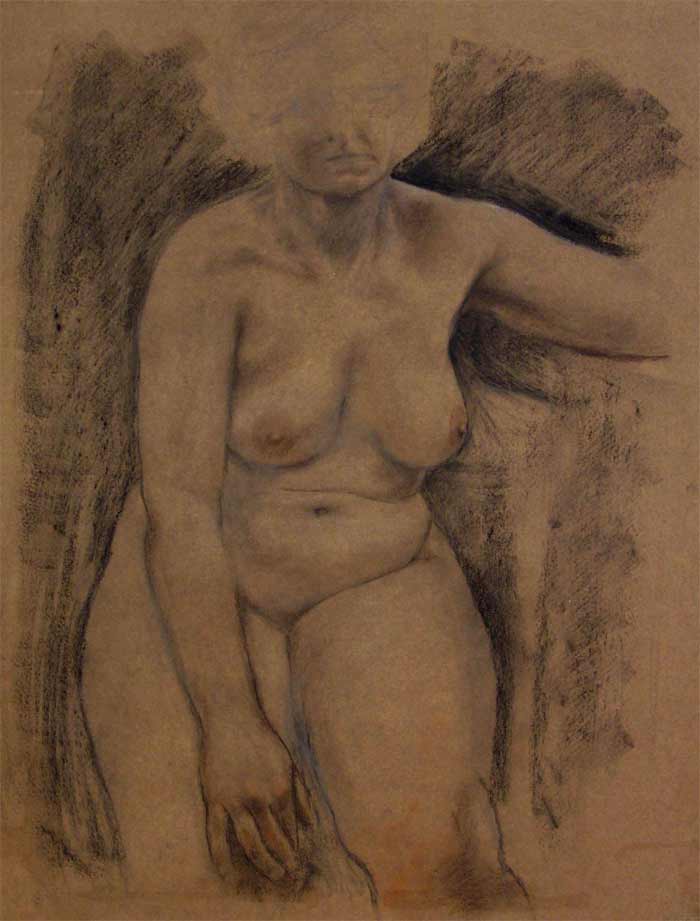Artwork and story by Chez Watts

I did this drawing when I was doing a Foundation Course at a small West Midlands Art School. There were about 36 students and we cycled round the departments in about 6 groups. I joined the ‘Illustration’ group because the fine art painting tutor was an abstract expressionist, dismissive about representational painting. In the 36 weeks there we had just two 3 hour life drawing sessions, – my biggest interest. In the first session we did 20 minute standing poses for the full 3 hours, drawing on flimsy ‘air mail’ blue paper sheets 24″x36″ using coloured blackboard chalks. The model was a policeman’s wife in her early forties, and seemed somehow unlikely for the job, but she was good at it, keeping still and being able to return to the exact same pose after a break. The tutor, a woman in her sixties was a sculptor by trade and only came to the college part time to do the life classes, because non of the other staff felt competent. I found her a very good tutor, though we saw she alarmed the model when she pronounced aloud to the class “If you can’t understand the shape you are trying to draw, go up and feel it, the model won’t mind, will you Mrs Harris? Touch is very informative, us sculptors rely on it.” Later somebody found a monograph in the college library about the sculptor turned life drawing tutor and found she had been moderately famous, though retired from sculpting now. Later the tutor told us that the model had been a student at the college 20 or more years before, and she knew what to expect. The second session a week later rather few students turned up and I was able to get close enough to do this drawing in the 3 hours (with rests). This was drawn on rather special paper, handmade in a French Monastery before WWII. It was very seductive to work on. The college had a printmaking tutor, Edgar Cave, who at 12 had been apprenticed to a London Stone Lithographer in 1939 after showing astonishing promise as a draftsman. The lithographer specialized in printing Large Posters for the many and competitive railway companies in Britain at that time. During the war the Royal College lost all its students because they were conscripted into the forces so they looked for students for the college that were too young to be conscripted and Edgar was offered a place. During his three years there he did many celebrated government public posters. At the end of the war, a London fine papers dealer went bust and sold off its remaining stocks cheaply. By now Edgar had his Printmaking tutor job at the college and was able to stock up on very good quality papers. He guarded these carefully in a locked storeroom to which only he had access, but he wanted me to take some.





This is an amazing story! And a beautiful drawing! I have been missing from the Drawing Academy for several years, but you have inspired me to begin again! Thank you, Lois Black